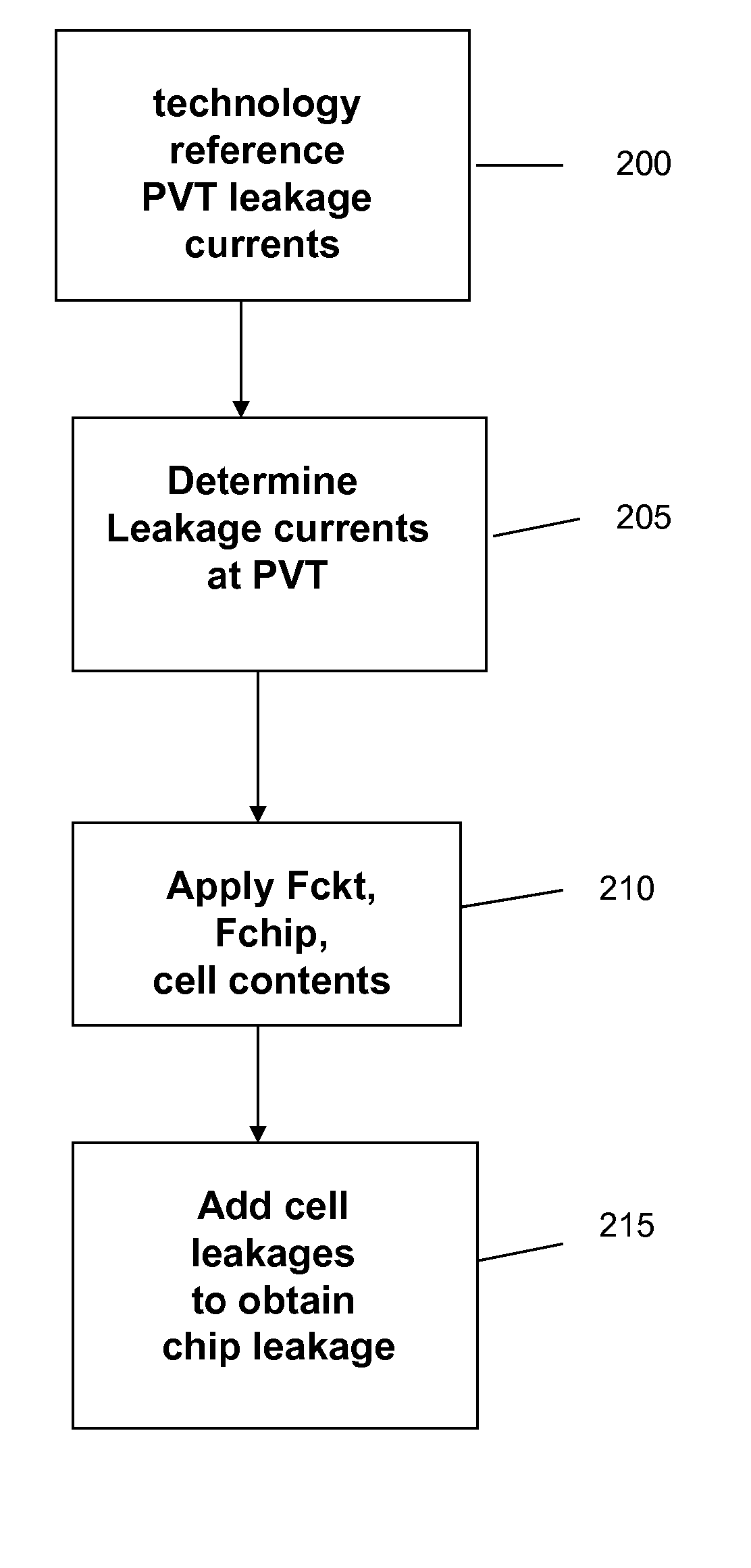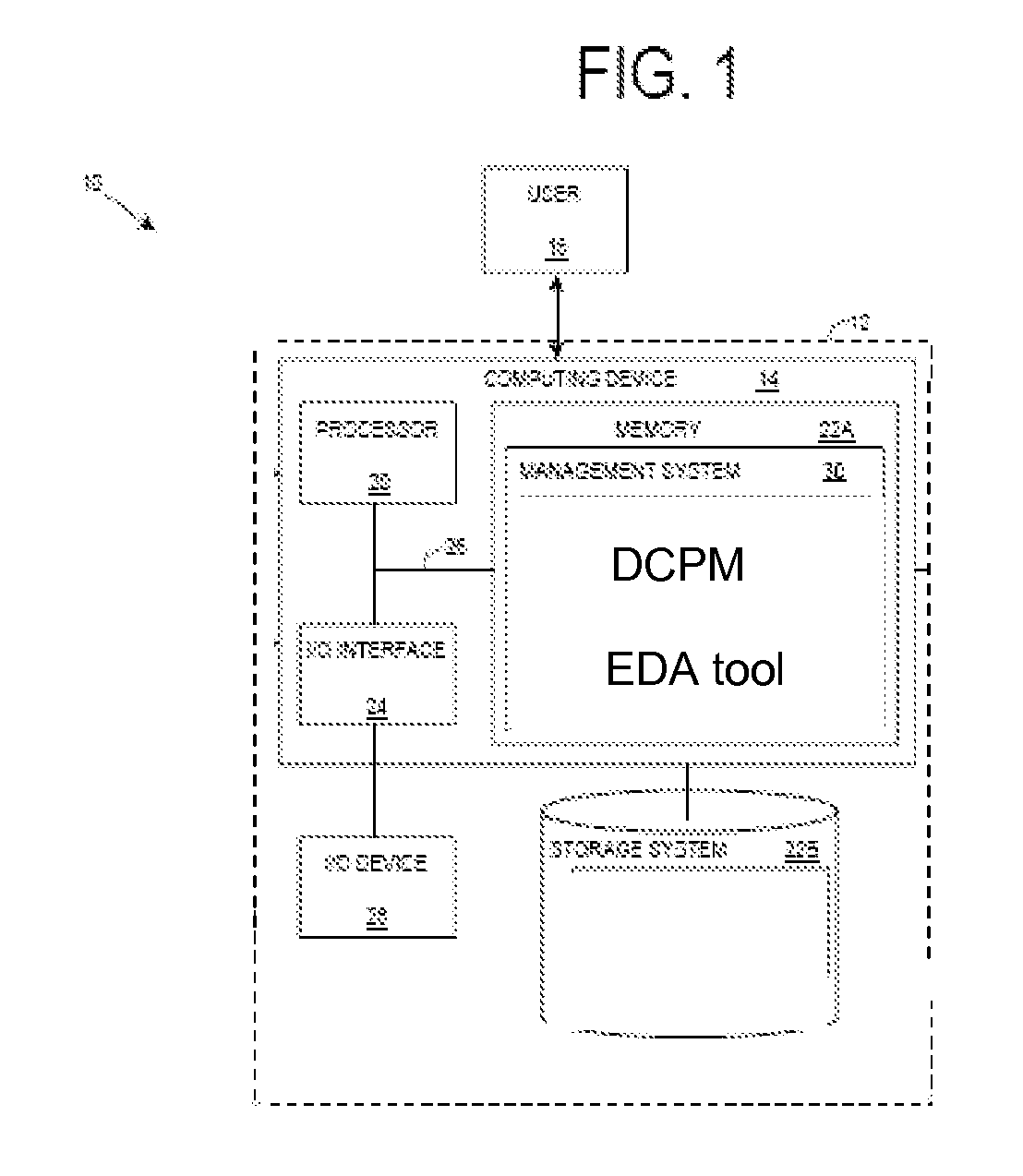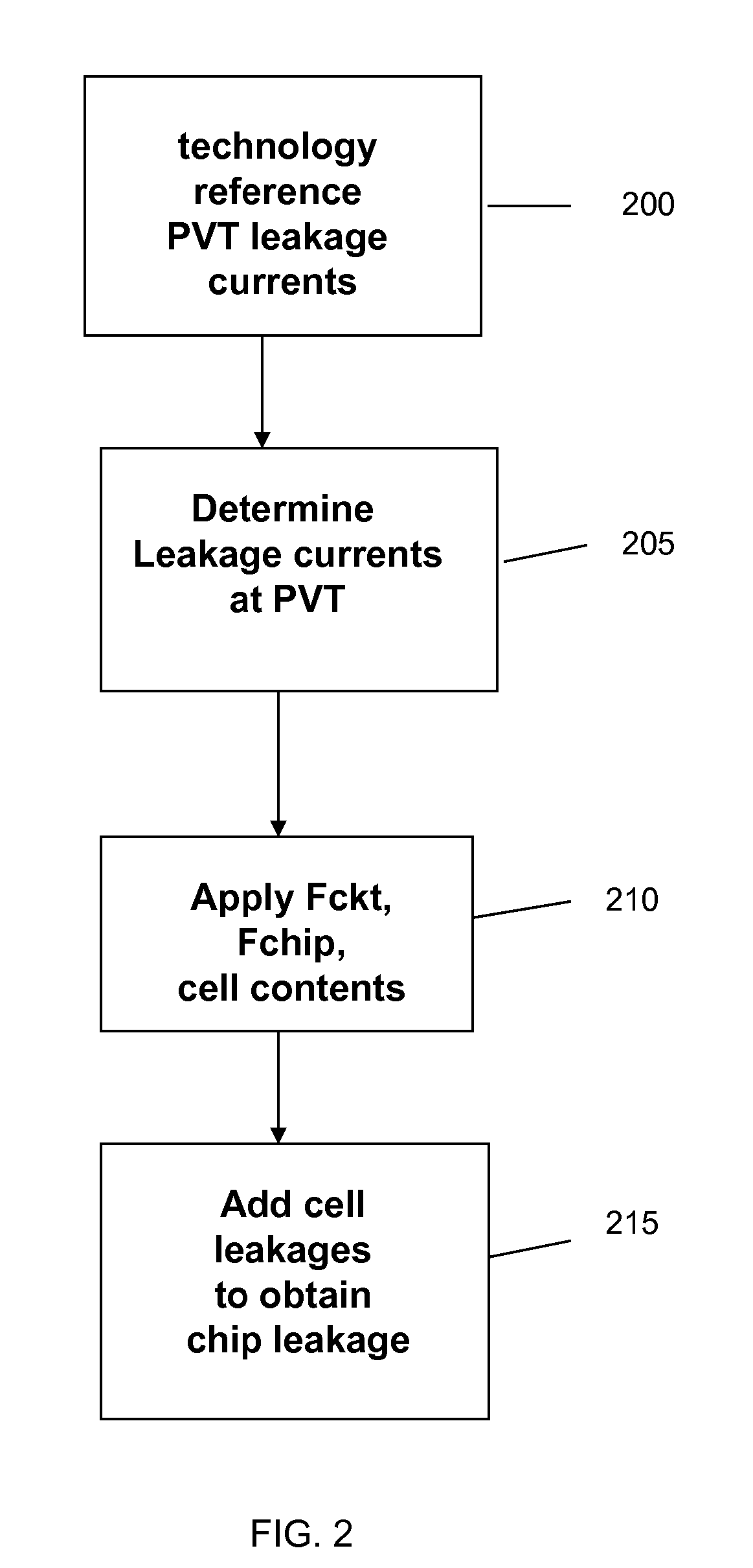Method and system of modeling leakage
a leakage and modeling technology, applied in the field of methods and systems of modeling leakage, can solve the problems of exponential dependency between vt and leakage, leakage across devices, spice techniques may not be the most appropriate technique for modeling leakage,
- Summary
- Abstract
- Description
- Claims
- Application Information
AI Technical Summary
Benefits of technology
Problems solved by technology
Method used
Image
Examples
Embodiment Construction
[0020] The invention relates to a method and system of modeling leakage across process, voltage and temperature ranges, taking into account cross-chip variations in process parameters, that allows the total chip leakage power to be estimated prior to manufacturing the chip. More particularly, the invention uses a versatile method to predict leakage in silicon across a wide process, voltage and temperature range, and across library variations such as low Vt gates applied to a method of production of cell power models.
[0021] In implementation, equations implemented in accordance with the method and system of the invention predict the leakage in CMOS logic, in which the equations use device characteristics and technology parameters to model leakage of a cell as part of a complete chip. The cell models built in the manner according to the method and system of the invention are easy to update for process shifts and can be used for both the typical voltage and temperature ranges for desi...
PUM
 Login to View More
Login to View More Abstract
Description
Claims
Application Information
 Login to View More
Login to View More - R&D
- Intellectual Property
- Life Sciences
- Materials
- Tech Scout
- Unparalleled Data Quality
- Higher Quality Content
- 60% Fewer Hallucinations
Browse by: Latest US Patents, China's latest patents, Technical Efficacy Thesaurus, Application Domain, Technology Topic, Popular Technical Reports.
© 2025 PatSnap. All rights reserved.Legal|Privacy policy|Modern Slavery Act Transparency Statement|Sitemap|About US| Contact US: help@patsnap.com



